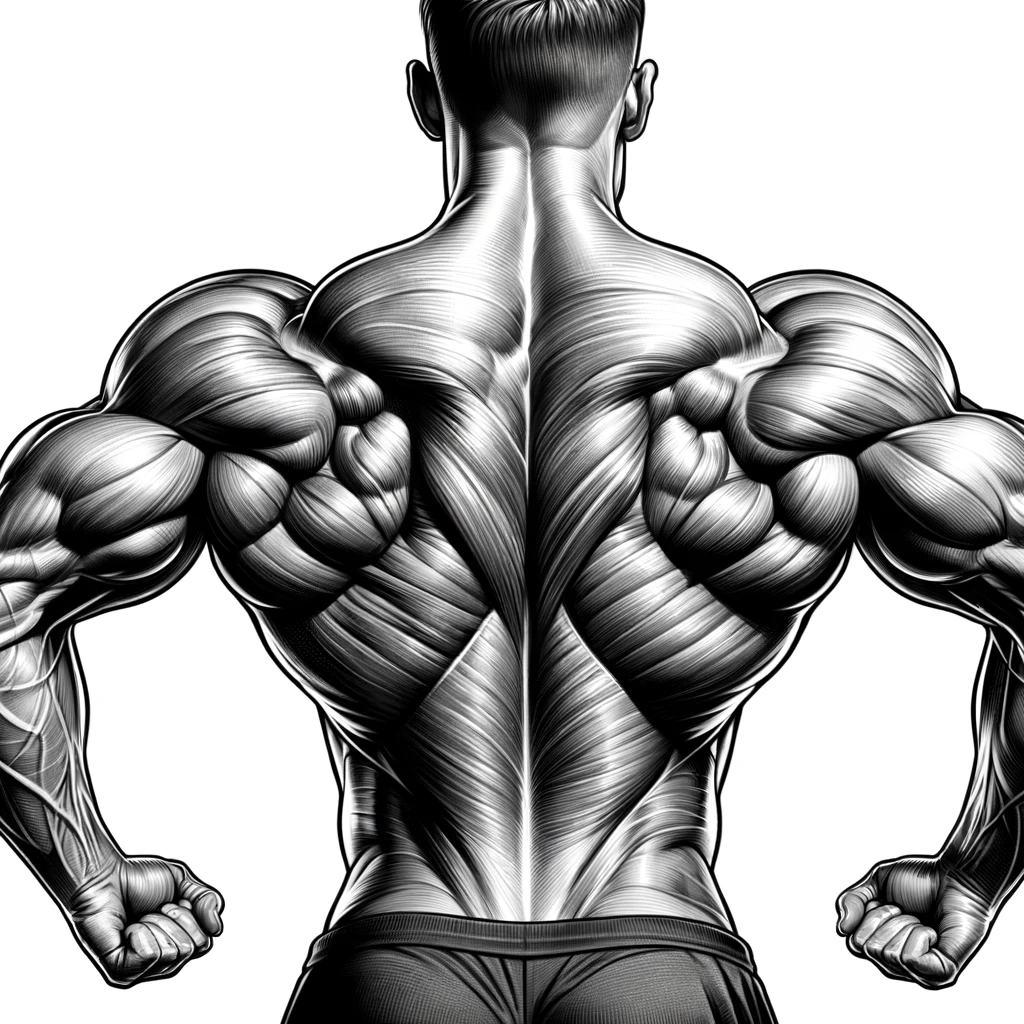Bulletproofing the Trapezius: Lower Traps guide
The lower trapezius, often an unsung hero in the realm of muscle development, frequently finds itself on the backburner of workout routines. Several factors contribute to this negligence, and when the lower trapezius is overshadowed, the repercussions extend beyond the gym, impacting daily life and weightlifting endeavors.

Reasons for Neglected Trapezius
- Unnoticed Functionality:
- The lower trapezius operates subtly, and its contributions are often overshadowed by the more conspicuous upper trapezius. This lack of visibility can lead to neglect, as its vital role in shoulder stability goes unnoticed.
- Aesthetic Priorities:
- The allure of a sculpted upper back often drives individuals to focus on exercises that emphasize the upper traps. The lower trapezius, dwelling in the shadows, loses the spotlight to its more visible counterpart.
- Complex Anatomy:
- The trapezius is a complex muscle with distinct regions, and understanding how to effectively target the lower fibers might be less intuitive. This complexity can discourage individuals from incorporating specific lower trapezius exercises into their routines.
- Sedentary Lifestyles:
- Modern sedentary lifestyles, characterized by prolonged periods of sitting, contribute to the underutilization of the lower trapezius. This muscle remains dormant, leading to weakness over time.
Effects of Weak Lower Trapezius
- Shoulder Instability in Everyday Activities:
- A weak lower trapezius compromises the stability of the shoulder blades. Everyday activities involving arm movement, like reaching or carrying, may strain the shoulders, increasing the risk of discomfort and injury.
- Postural Struggles:
- The lower trapezius plays a pivotal role in maintaining proper posture. Weakness in this area can contribute to rounded shoulders and an increased curvature of the upper back, leading to postural imbalances.
- Neck and Upper Back Tension:
- Imbalances in the trapezius can result in heightened tension in the neck and upper back. A weak lower trapezius may force the upper trapezius and neck muscles to overcompensate, leading to chronic tension and discomfort.
- Impaired Weightlifting Performance:
- In the realm of weightlifting, a feeble lower trapezius compromises scapular stability. This weakness may manifest as a reduction in strength and power during lifts, hindering overall performance and increasing the susceptibility to injuries.
- Inefficient Overhead Movements:
- Activities requiring overhead arm movements, such as lifting weights overhead or reaching for objects on high shelves, become less efficient. The lower trapezius, responsible for initiating and controlling these movements, may lack the necessary strength.
- Shoulder Health Concerns:
- Weakened lower trapezius muscles are associated with compromised shoulder health. The intricate interplay of muscles in the shoulder girdle is disrupted, potentially leading to conditions like impingement or rotator cuff issues.
Concluding Thoughts for the Trapezius
In essence, neglecting the lower trapezius extends beyond aesthetic considerations; it impacts the fundamental functionality of the shoulder complex. Prioritizing exercises that specifically target the lower trapezius is not just a matter of balanced muscle development; it’s a proactive approach towards maintaining optimal shoulder health and enhancing overall well-being. The exercises I’ve found to be most effective for the lower traps are as follows.
Y-Raises
The Y-raise is an effective exercise for targeting the lower traps. By elevating the arms in a Y-shaped motion, this movement specifically engages the lower trapezius muscles, promoting scapular depression and stability. The exercise helps strengthen the lower trapezius, contributing to improved shoulder mechanics, reduced risk of inequalities and enhanced overall shoulder health. This exercise is particularly beneficial when training the negative.
Reverse Pulldowns
Reverse pulldowns serve as an effective exercise for targeting the lower trapezius. This movement involves pulling the bar downward behind the head and activating the lower trapezius muscles to promote scapular retraction and depression. By emphasizing this region, reverse pulldowns contribute to enhanced scapular stability and improved posture.
Dumbbell Snatches
Dumbbell snatches offer an effective means of engaging the lower trapezius. This dynamic exercise involves a rapid lifting motion, activating the lower trapezius for scapular stability and control. Dumbbell snatches promote a comprehensive upper-body workout, enhancing strength in the lower traps and contributing to improved shoulder mechanics.
Pull-ups
Few exercises can match the benefits of pull-ups however you must perform them correctly. We have an entire guide on the full benefits of pull-ups so we’ll cut this short by just saying pull-ups are another fantastic compound movement to hit your lower traps.
Face-pulls
Face pulls are an excellent exercise for targeting the lower trapezius. This movement involves pulling a rope or cable attachment towards the face, engaging the lower trapezius for scapular retraction and elevation. Face pulls help strengthen the lower trapezius, promoting balanced shoulder development and enhancing overall posture.

